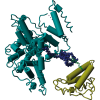Researchers have found that disruption of a cellular structure, known as the actin cytoskeleton, is a “priming signal” for the body to respond to a virus.

These findings could potentially lay the groundwork for development of new antiviral vaccines and treatments, they claim.
Previously, viral genetic material, such as RNA, was considered the sole requirement for certain sensor molecules that live in cells to trigger an immune response – an “alarm system” for many types of cells.
RNA also serves as a basis for vaccines through training a patient’s immune system to recognise a virus. This new study showed that the signalling process also requires disrupting the actin cytoskeleton inside cells, which occurs when a virus infects cells.
“It’s a new way of considering how the immune system can be activated, and the implications are that this could lead to broad antiviral therapeutics,” said author Michaela Gack. “Our data show this process is common across different types of RNA viruses.”
Image credit | iStock




